#Bhutanese butter tea
Text
7 Benefits of Cordyceps: Harnessing the Power of Traditional Medicine | Dailybhutan
Discover the age-old secrets of Cordyceps, prized in Traditional Chinese Medicine (TCM) and herbalism. Uncover the multitude of health benefits linked to this remarkable fungus. Explore the natural wonders of Cordyceps and its potential to enhance your well-being
#Bhutan News#Headlines of Bhutan#News of Bhutan#Latest news in Bhutan#Bhutanese Headlines#Bhutan Prime Minister#Prime Minister Bhutan#Bhutan surgeon#Dr Lotay Tshering#bhutan#traveltobhutan#balanced tourism in bhutan#bhutan tours#Gross National Happiness#kingdom of bhutan#land of the thunder dragon#tours to bhutan#beverages#bhutanese beer#Bhutanese butter tea#red panda beer#bhutanese whiskey#Gong meditation#Singing bowl meditation#Sound healing#Sound therapy
0 notes
Text
I grew up in my home state 'Delhi', the National Capital Territory of India also known as 'Dilli dil walon ki", which has some lip-smacking food. From your chatpata street food to budget-friendly to fine dining. I Will be sharing my top 5 of my favourites and not-so-known restaurants and cafes that you can visit with your family, friends and loved ones in the Delhi capital.
Lha Kitchen:
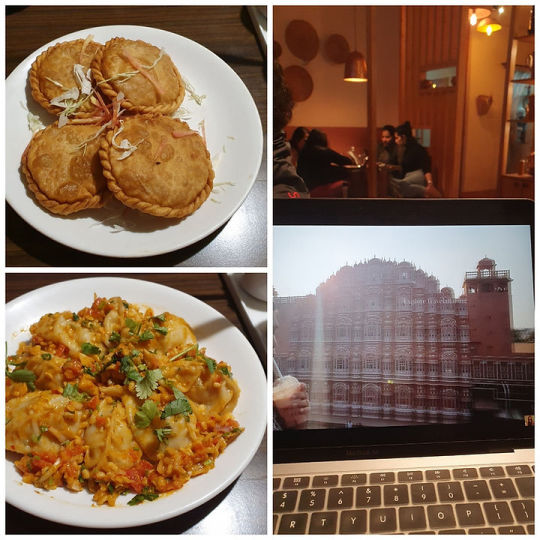
Lha Kitchen focuses on 4
different cuisines-Tibetan, Nepalese, Bhutanese and Chinese. This place has 22 varieties of momos veg/non-veg. Other than momos they have some interesting Tibetan butter tea, mushroom Datsi and Tin Mo.
I tried their Chicken shape Which had a crispy outer layer with chicken filling inside. Make sure to enjoy spicy chutney which will make you crave more. Next, I ordered
Sandekho Momos or I should say 'Momos ki chat', was extremely flavourful and chatpata.
Location: 168,1st floor, Humayunpur, Safdarjung Enclave, New Delhi, Delhi 110029
Cost for 2: Rs 600 /-
Paul, Vasant Kunj:
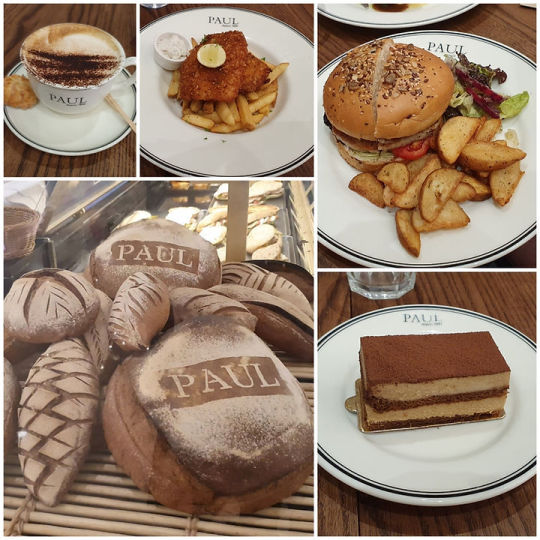
Paul has 2 outlets all over Delhi, one is in Vasant Kunj ambience mall, and the second one is in Gurgaon Ambience mall. If you want to eat and dine in an authentic European way with world-class service then Paul should be on the top list. I love eating their fish and chips, Chicken burgers, and pizza. If you are a coffee lover then don't forget to try their coffee.
Location
Vasant kunj: UG-28A, Ambience Mall, Nelson Mandela Marg, Vasant Kunj, Delhi 110070
Gurgaon: G-1 , Ground Floor ,Ambience Mall, Sector 24, Gurugram, Haryana 122022
Cost for 2: Rs 1400/-
YooMee

If you love Pan- Asian Cuisine along with Japanese Manga comic strips. Enjoy with Ramen, Sushi and yummy Dim Sums then this place should be on the top list of yours. By far this is the only place in Delhi I am aware of, where I have tried Veg sticky rice (and I love it that). This place has won my heart in terms of price, quality and quality.
Fun fact- this is the first place where I tried sushi for the first time, and my experience was just amazing.
My personal Recommendations are Konjee crispy lamb, Crunchy chicken dumpling,
Char siu pork belly, Tom Yum soup veg
Location: E Block Rd M27, Ground Floor, Block M, Market, Greater Kailash, New Delhi, Delhi 110048
Cost for 2: Rs 900 to 1000
CHÔ Vietnamese Kitchen & Bar
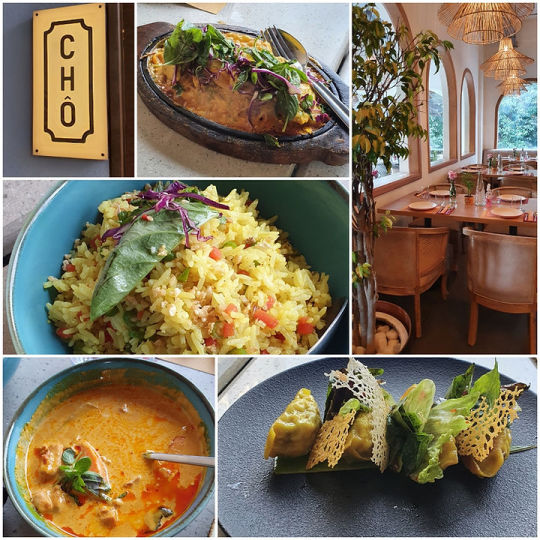
It is a very chic and classy Vietnamese restaurant with a warm light and camping vibe. They offer some lip-smacking Dimsums, pho and fish. Honestly, everything I tasted was mind-blowing and impressive. I don't want to spill all the beans so go and experience the warm hospitality, Visually touching presentation and of course the yummylicious food. My personal Recommendation:
Firecracker chicken
Turmeric chicken chili dumplings
Chicken pho
Turmeric fried rice
Cha cha sizzling fish
Vietnamese curry chicken
Location: H 5/1, FF LHS Kalkadass Marg, Mehrauli, New Delhi
Cost for 2 : Rs 3000 with Alcohol
Colocal Chocolates

If you have a sweet tooth then check out this last cafe with your gang. Colocal offers the finest Indian - grown cacao and has some smooth, rich chocolates in Delhi. You must have seen the famous campfire hot chocolate all over social media, And definitely, it's worth the hype. This should be on top of the list if you love love love chocolate.
(If you want some Insta worthy pictures then definitely hop on to this place)
location :
Khan market: 65, 1st Floor, Khan Market, New Delhi
Chattarpur: 100 Feet Road, The Dhan Mill Compound, Chhatarpur, New Delhi
Cost for 2: Rs 1000/-
I Hope after reading this you are craving for yummy and delicious food. If in case you are lazy and don't feel like reading then check out this video 😉
youtube
3 notes
·
View notes
Text
Exploring the Land of the Thunder Dragon: Thrilling Treks and Things to Do in Bhutan
Nestled in the heart of the Himalayas, Bhutan is a land of unparalleled natural beauty and cultural richness. From its ancient monasteries perched on towering cliffs to its lush valleys dotted with prayer flags, this enchanting kingdom offers a treasure trove of experiences for adventurous souls. Among the activities to do in Bhutan that beckon travelers, embarking on thrilling treks stands out as a highlight. Let's delve into the world of trekking in Bhutan and discover the captivating landscapes and fascinating culture that await.

Bhutan, often referred to as the "Land of the Thunder Dragon," boasts a diverse range of trekking trails that cater to both seasoned adventurers and novice hikers. One of the most iconic treks in Bhutan is the Jomolhari Trek, which takes trekkers on a journey through breathtaking landscapes of snow-capped peaks, alpine meadows, and turquoise lakes. As you traverse this route, you'll have the opportunity to visit remote villages, interact with locals, and gain insights into Bhutanese way of life.
For those seeking a more off-the-beaten-path adventure, the Snowman Trek offers a challenging yet rewarding experience. Known as one of the toughest treks in the world, this epic journey traverses high mountain passes, pristine valleys, and remote yak herder settlements. Along the way, trekkers are treated to unparalleled views of the Himalayan range and encounter rare wildlife species such as the elusive snow leopard.

Aside from these legendary treks, Bhutan also offers a myriad of shorter and less strenuous hikes that showcase the country's natural beauty and cultural heritage. The Dochula - Lungchutse Trek, for example, is a moderate day hike that takes you through rhododendron forests and past ancient monasteries to the summit of Lungchutse, where panoramic views of the Himalayas await. Similarly, the Phobjikha Valley Trek offers a gentle walk through picturesque landscapes inhabited by endangered black-necked cranes during the winter months.
While trekking is undoubtedly a highlight of any visit to Bhutan, the kingdom offers a wealth of other activities and experiences for travelers to enjoy. Immerse yourself in Bhutanese culture by attending one of the country's vibrant festivals, such as the Paro Tsechu or the Thimphu Tshechu, where masked dances, religious ceremonies, and colorful celebrations abound. Visit ancient monasteries and dzongs, such as the iconic Tiger's Nest Monastery and Punakha Dzong, to learn about Bhutan's spiritual heritage and architectural marvels.

For nature enthusiasts, Bhutan is a paradise waiting to be explored. Take a leisurely stroll through the serene forests of Phrumsengla National Park, home to diverse flora and fauna including the elusive takin, Bhutan's national animal. Or embark on a thrilling white-water rafting adventure along the pristine waters of the Mo Chhu or Pho Chhu rivers, where rapids range from gentle to adrenaline-pumping.
No visit to Bhutan would be complete without sampling its delectable cuisine. Indulge in traditional Bhutanese dishes such as ema datshi (chili and cheese stew), momo (dumplings), and suja (butter tea), while savoring the warm hospitality of the locals. And after a day of exploration, unwind and rejuvenate your body and mind with a traditional Bhutanese hot stone bath, known for its therapeutic properties.

In conclusion, Bhutan offers a wealth of experiences for travelers seeking adventure, cultural immersion, and natural beauty. Whether you're trekking through rugged mountain terrain, attending colorful festivals, or savoring delicious Bhutanese cuisine, the kingdom never fails to captivate and inspire. So pack your bags, lace up your hiking boots, and embark on an unforgettable journey to the Land of the Thunder Dragon.
0 notes
Text
Bhutan–India Relations: Between Meditation And Hallucination
Ravi Nair*
READING tea leaves in the best of circumstances is hazardous. More so when there are so many varieties on offer.
Indian Darjeeling, one of the best teas, is exquisite in all its varieties, it is also the easiest to classify. Oolong, one of the finer Chinese teas, with its many varieties, is much more difficult. Suja, Bhutanese butter tea, is difficult to read due to the infusion of…

View On WordPress
#Bhutan#Bhutan-China Pact#Border Agreement#China#Diplomacy#India#India sidelined#Peace and Tranquility
0 notes
Text
Exploring the Culinary Delights of Bhutan: Street Food and Cafés
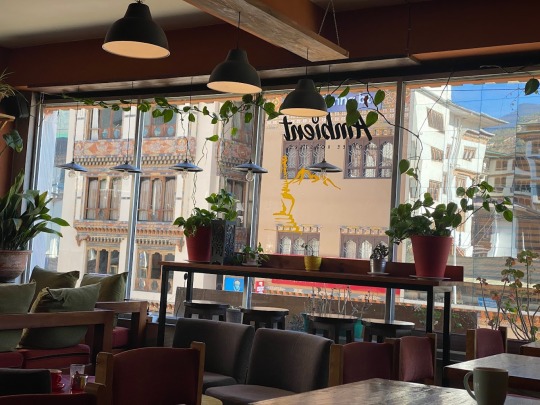
Bhutan, the Land of the Thunder Dragon, offers not only breathtaking landscapes but also a rich culinary experience.From bustling Bhutan street food to cozy cafes in Bhutan, Bhutanese cuisine tantalizes the taste buds of travelers seeking authentic flavors.
A Gastronomic Adventure on Bhutanese Streets
In Bhutan, street food isn't just about satisfying hunger; it's a cultural experience. Thimphu's streets come alive with vendors selling momos, the iconic dumplings filled with meat or vegetables and served with fiery dipping sauces. Adventurous foodies can also sample phaksha paa, a spicy pork dish cooked with red chilies, or try ezay, a traditional condiment made from chili peppers and cheese.
Exploring Thimphu's Weekend Market
The Weekend Market in Thimphu is a must-visit for food enthusiasts. Here, amidst the vibrant colors and lively atmosphere, one can find an array of fresh produce, local delicacies, and snacks. From dried yak cheese to fried river trout, the market offers a glimpse into Bhutanese culinary traditions.

Serene Retreats: Cafés in the Kingdom of Happiness
For those seeking a tranquil escape, Bhutan's cafés offer respite amidst stunning mountain vistas. Whether nestled in the heart of Thimphu or perched atop Paro's hills, these cafes combine exquisite views with delectable treats.
Café Zomlingthang: A Taste of Bhutanese Hospitality
Café Zomlingthang, located in the heart of Thimphu, welcomes guests with warm Bhutanese hospitality. Here, one can savor traditional dishes like ema datshi (chili and cheese stew) or enjoy a cup of locally grown tea while admiring panoramic views of the city.
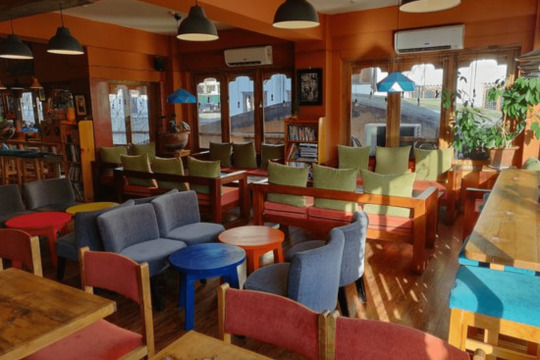
Mountain Café: Where Nature Meets Cuisine
Perched on the slopes of Paro Valley, Mountain Café offers a tranquil escape from the bustle of city life. Guests can indulge in freshly brewed coffee and homemade pastries while taking in breathtaking views of snow-capped peaks.
Exploring Café Culture in Bhutan
Bhutan's café culture reflects the country's unique blend of tradition and modernity. Whether sipping butter tea in a centuries-old tea house or enjoying a latte in a trendy urban café, visitors are sure to find a spot that resonates with their taste and style.
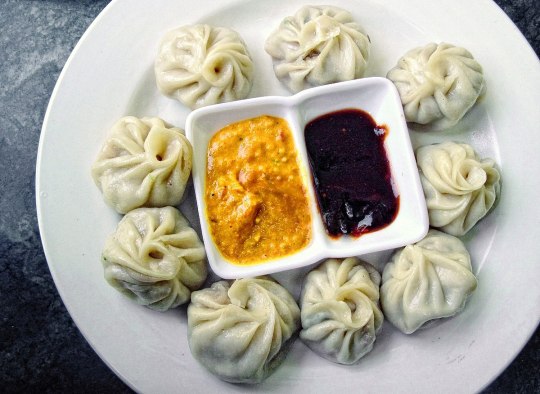
Conclusion
From the sizzling streets of Thimphu to the serene mountain cafes of Paro, Bhutan offers a diverse culinary landscape waiting to be explored. Whether indulging in spicy street food or savoring a cup of tea amidst breathtaking scenery, visitors are sure to be enchanted by the flavors of the Land of the Thund
0 notes
Text
Homestay Heroes: Celebrating the Women Who Shape Local Traditions
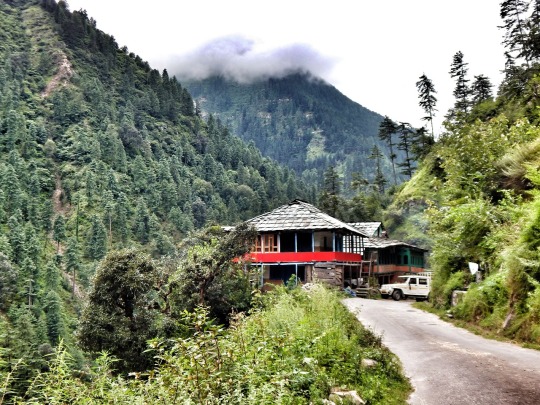
Behind every memorable homestay experience lies a remarkable woman whose warmth, hospitality, and culinary prowess breathe life into local traditions. From the heart of Madhya Pradesh to the best homestay in Bhutan, these unsung heroes play a vital role in preserving culture, fostering connections, and shaping unforgettable travel experiences.
Madhya Pradesh, known as the heartland of India, is home to countless women whose culinary skills and cultural knowledge are passed down through generations. In homestays across the state, these women are the backbone of the experience, welcoming guests with open arms and treating them to authentic regional cuisine prepared with love and care.
Homestay in Madhya Pradesh provides a platform for these women to showcase their talents and share their stories, enriching the travel experience for visitors and strengthening bonds within the community. From teaching guests how to prepare traditional dishes to sharing insights into local customs and rituals, these homestay heroes play a vital role in preserving the cultural heritage of the region.
But the influence of homestay heroes extends beyond the borders of Madhya Pradesh to the serene kingdom of Bhutan, where the best homestays are often run by women who are guardians of their country's unique traditions. Nestled amidst the majestic Himalayas, Bhutan is a land of breathtaking beauty and rich cultural heritage, and it's the women who call this kingdom home who are the true guardians of its traditions.
In Bhutan, homestays offer guests the chance to experience the kingdom's vibrant culture firsthand, thanks to the tireless efforts of these homestay heroes. Whether it's learning the art of Bhutanese cooking, participating in traditional ceremonies, or simply sharing stories over a cup of butter tea, guests are welcomed into the homes of these women with open arms and warm smiles.
But perhaps the most inspiring aspect of homestay heroes is the impact they have on their communities. In both Madhya Pradesh and Bhutan, these women are not just hosts; they're pillars of strength and sources of inspiration for those around them. Through their hard work, dedication, and unwavering hospitality, they empower others to embrace their heritage and celebrate their identity.
In conclusion, homestay heroes are the unsung champions of cultural preservation and community empowerment, whose contributions shape unforgettable travel experiences for visitors from around the world. From the heart of Madhya Pradesh to the best homestays in Bhutan, these women embody the spirit of hospitality, generosity, and resilience, reminding us of the transformative power of connection and shared humanity. So let's celebrate these homestay heroes and the invaluable role they play in shaping local traditions and enriching the lives of travelers everywhere
0 notes
Text
Bhutan's Tea Culture: Exploring Tea Houses and Gardens
Bhutan's tea culture is deeply rooted in its rich tradition and the serene environment of the Eastern Himalayas. While Bhutan is not as famous for tea as some other Asian countries, it has a growing appreciation for the beverage, and tea houses and gardens can offer unique experiences. Here's a guide to exploring Bhutan's tea culture:
Bhutanese Tea Gardens:
Visit tea gardens in Bhutan to witness the cultivation and processing of tea leaves. Some areas, particularly in southern Bhutan, are known for tea plantations.
Lhamo's Croft, Samcholing:
Explore Lhamo's Croft in Samcholing, located in the Samdrup Jongkhar district. This is one of the few private tea estates in Bhutan. It offers guided tours where visitors can learn about tea cultivation and enjoy a cup of freshly brewed tea.
Bhutanese Butter Tea (Suja):
Experience the traditional Bhutanese butter tea, known as suja. This unique tea is made with salt, butter, and tea leaves, providing a distinct flavor. Local tea houses often serve suja along with other varieties.
Tea Houses in Thimphu and Paro:
In the capital city, Thimphu, and the picturesque town of Paro, you can find tea houses and cafes that serve a variety of teas. These establishments often offer a cozy ambiance and a chance to enjoy local and international tea blends.
Drukgyel Tea House, Paro:
Drukgyel Tea House, located in Paro, is known for its collection of Bhutanese and international teas. The tea house often hosts cultural events and provides a serene atmosphere to relax and enjoy your tea.
Local Markets:
Explore local markets in Bhutan, such as the Centenary Farmers' Market in Thimphu, where you may find a variety of tea leaves, including traditional Bhutanese tea.
Tea Tasting Experiences:
Engage in tea tasting experiences offered by tea houses or cultural centers. Learn about the different types of Bhutanese tea and the art of brewing.
Homestay Experiences:
Consider staying in a traditional Bhutanese homestay where you can experience local hospitality and get a glimpse into daily life, including the preparation and serving of tea.
Bhutanese Tea Ceremony:
Participate in a Bhutanese tea ceremony, where you can learn about the cultural significance of tea and its role in Bhutanese society.
Tea-themed Tours:
Some tour operators offer tea-themed tours, combining visits to tea gardens, tea houses, and cultural sites. These tours provide a comprehensive understanding of Bhutan's tea culture.
Dining in Bhutanese Restaurants:
Bhutanese restaurants often offer a selection of teas to complement traditional Bhutanese dishes. It's an opportunity to pair your meal with different tea varieties.
Bhutanese Tea Souvenirs:
Purchase Bhutanese tea as souvenirs from local markets or tea houses. This allows you to bring a piece of Bhutan's tea culture back home.
Exploring Bhutan's tea culture provides a unique and immersive experience, allowing you to connect with the local community and appreciate the traditions surrounding this beloved beverage in the Kingdom of Bhutan.
See more :-
bird watching, eco travels, eco -friendly tourism, nature tourism places, birding tour
cultural tours, eco travels, thunder dragon, adventurous, spiritual
birds of Bhutan, eco travels, bird photography, wildlife tours, Buddhism tour
Eco travels , bird photography, Trashigang festival, cultural heritage, Thrumshingla national park
cultural holiday, Eco travels , bird watching, mammals, flowers
birding, animal watching, nature walk, Eco travels , extinct species
birding tour, Eco travels, cultural tour , best travel agency, Bhutan tour
Bhutan birding tour , Eco travels, Bhutan tour packages , long tour packages, wild life sanctuaries Bhutan tour packages
spring bird, Eco travels, wildlife tour, ecotours, Himalayan Monal
historical sites, Eco Travels , Thimphu, Paro Taktsang, trip to Bhutan
7 Days – Short Bird Watching and Cultural Tour in Bhutan - Langur Eco Travels
photographic trip in Bhutan
Bhutan’s Biodiversity
cultural highlights of Bhutan
punakha festival tour Bhutan
drukpa kora,lost valley of Trashiyangtse
paro festival, druk path trek
Jigme Singye Wangchuck National Park
Royal Manas National Park
Best Wildlife Sanctuaries
Travel to Bhutan from USA (United States) | Langur Eco Travels
Travel To Bhutan from UK
Travel to Bhutan from Australia
Bhutan Family Tour Packages
Bhutan Vacation
Bhutan Trip Package
Birdwatching in Bhutan
0 notes
Text
Spices of the Himalayas: A Deep Dive into Bhutanese Culinary Delights
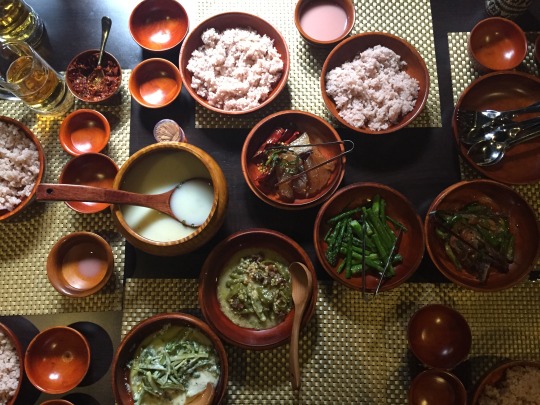
Introduction
Bhutan, a small Himalayan kingdom nestled between India and China, is renowned for its unique cultural heritage, breathtaking landscapes, and the pursuit of Gross National Happiness. Among the many facets that contribute to Bhutan's distinct identity, its cuisine stands out as a reflection of the country's rich history, traditional practices, and reverence for nature. This article delves into the fascinating world of Bhutanese cuisine, exploring its key ingredients, cooking techniques, and the cultural significance of its dishes with Bhutan's best restaurants.
I. The Essence of Bhutanese Cuisine
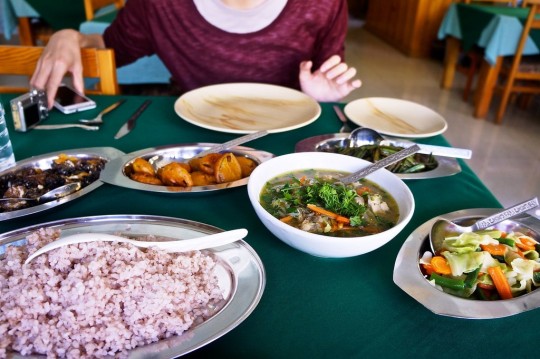
A. Overview of Bhutanese Culinary Heritage
Bhutanese cuisine is deeply rooted in tradition, drawing inspiration from the country's agricultural practices, Buddhist beliefs, and regional diversity. It reflects a harmonious blend of spicy and savory flavors, with an emphasis on locally sourced ingredients.
B. Staple Foods of Bhutan
Red Rice: The Heart of Bhutanese Meals Bhutanese meals are often centered around red rice, a nutty and slightly sticky grain that is a staple in Bhutan. It is rich in nutrients and serves as the foundation for many traditional dishes.
Buckwheat: A Cold-Climate Crop Buckwheat thrives in Bhutan's cool climate and is a key ingredient in traditional dishes like buckwheat pancakes (khuli). These hearty pancakes are enjoyed with butter or cheese and are a popular breakfast item.
II. Flavors of Bhutan: Spices and Seasonings

A. The Heat of Bhutanese Cuisine
Ema Datshi: Bhutan's National Dish Ema Datshi, a spicy chili and cheese stew, holds a special place in Bhutanese hearts. The dish is a flavorful celebration of Bhutanese red and green chilies, combined with locally-produced cheese.
Dried Red Chilies: A Staple Ingredient Dried red chilies are a common sight in Bhutanese kitchens. They are not only used to add heat to dishes but are also sun-dried and preserved for use throughout the year.
B. Herbs and Aromatics
Soel: A Unique Bhutanese Herb Soel, also known as Bhutanese hogweed, is a wild mountain herb that imparts a distinct flavor to many Bhutanese dishes. It is often used in traditional soups and stews.
Garlic and Ginger: Flavor Enhancers Garlic and ginger are essential flavor enhancers in Bhutanese cuisine. They are finely chopped or pounded into a paste to infuse dishes with a robust and aromatic profile.
III. Traditional Bhutanese Dishes

A. Suja: Butter Tea Suja, or butter tea, is a traditional Bhutanese beverage made with tea leaves, yak butter, and salt. It is a warming drink commonly consumed in the chilly mountain regions and serves as a symbol of hospitality.
B. Phaksha Paa: Pork with Red Chili Phaksha Paa is a hearty pork dish prepared with red chilies, radishes, and a variety of spices. It exemplifies the bold and robust flavors that define Bhutanese cuisine.
C. Jasha Maroo: Spicy Chicken Stew Jasha Maroo is a flavorful chicken stew seasoned with onions, garlic, and an abundance of red chilies. It showcases the skillful use of spices and the love for hearty, spicy meals.
IV. Culinary Traditions and Rituals
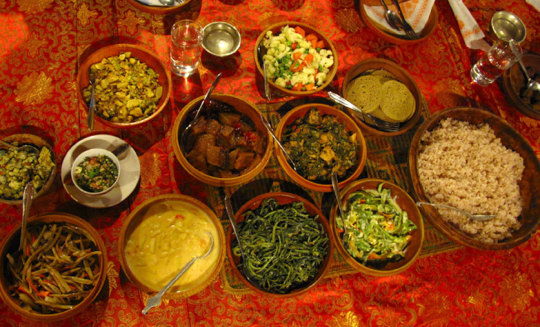
A. Food as a Cultural Expression
Tshechu Festivals: Celebrating with Food Bhutanese festivals, or tshechus, are marked by elaborate feasts and communal gatherings. Food plays a central role in these celebrations, reflecting the community's unity and gratitude.
Traditional Cooking Methods Bhutanese cuisine often involves traditional cooking methods like open-fire cooking and stone grinding. These techniques not only impart a unique flavor but also preserve the authenticity of the dishes.
B. Rituals and Practices
Offering Food to Deities In Bhutanese culture, food is offered to deities as a gesture of respect and gratitude. This practice underscores the spiritual connection between the Bhutanese people and their natural surroundings.
Seasonal Eating Bhutanese cuisine follows a seasonal approach, with dishes reflecting the availability of locally grown ingredients. This practice aligns with the country's commitment to sustainability and environmental harmony.
Conclusion:
Bhutanese cuisine, with its bold flavors, reliance on local produce, and deep cultural roots, offers a captivating culinary experience. From the staple red rice to the fiery Ema Datshi and aromatic Jasha Maroo, each dish tells a story of Bhutan's history and traditions. As the world becomes more interconnected, exploring and appreciating the nuances of Bhutanese cuisine becomes a journey into the heart of this enchanting kingdom, where food is more than sustenance—it is a celebration of life, community, and happiness.
1 note
·
View note
Text
Bhutan Travel Guide: How to Plan Your Trip with Medhey
I believe there might be a misunderstanding in your request, as "Medhey" does not seem to be related to travel or Bhutan. However, I can certainly provide you with a general travel guide for planning a trip to Bhutan. If you have a specific inquiry or if there's something else you meant by "Medhey," please provide more details so I can assist you better.
Planning a Trip to Bhutan:
Research and Itinerary:
Familiarize yourself with Bhutan's culture, customs, and attractions.
Plan your itinerary, considering the places you want to visit.
Visa and Permits:
Bhutan has a daily tariff system, and tourists must obtain a visa through an authorized tour operator in Bhutan.
Ensure you have the necessary permits for specific areas you plan to visit.
Travel Seasons:
Bhutan has distinct seasons. The ideal times to visit are spring (March to May) and autumn (September to November).
Accommodation:
Book accommodations in advance, especially during peak seasons.
Options range from luxury hotels to guesthouses.
Transportation:
Arrange transportation within Bhutan with your tour operator.
The main airport is in Paro, and internal travel is often by road.
Cultural Etiquette:
Respect local customs and dress modestly, especially when visiting religious sites.
Photography may be restricted in certain areas, so check and respect the rules.
Currency and Expenses:
Bhutanese Ngultrum (BTN) is the local currency. Credit cards are widely accepted in hotels and some shops, but it's advisable to carry cash in smaller towns.
Health Precautions:
Check if any vaccinations or health precautions are required before traveling to Bhutan.
Altitude sickness is a concern in some areas, so acclimatize gradually.
Pack Appropriately:
Depending on the season, pack layers, comfortable shoes, and essentials for varying weather conditions.
Responsible Tourism:
Bhutan places a strong emphasis on sustainability. Respect the environment and local communities.
Explore Local Cuisine:
Try Bhutanese dishes like Ema Datshi (chili and cheese), Momos (dumplings), and traditional butter tea.
Learn Basic Phrases:
While English is spoken in many places, learning a few basic phrases in Dzongkha (the official language) can enhance your experience.
Remember, Bhutan is known for its unique approach to Gross National Happiness, so embrace the culture, interact with locals, and enjoy the serene beauty of the "Land of the Thunder Dragon."
See more:-
Business in Bhutan, Business Ideas in Bhutan, Online Shopping in Bhutan, Business bhutan, Amazon In Bhutan, Myntra in bhutan, Toyota in bhutan, Hyundai in bhutan, Online Marketplace In Bhutan, E Commerce In Bhutan
Business in Bhutan, Business Ideas in Bhutan, Online Shopping in Bhutan, Business bhutan, Amazon In Bhutan, Myntra in bhutan, Toyota in bhutan, Hyundai in bhutan, Online Marketplace In Bhutan, E Commerce In Bhutan
international flight tickets, international ticket booking, medhey, international flights with drukair, cheap international flights, flight booking app
Digital Marketplace in Bhutan
Travelling to Bhutan
Which is a better e-commerce solution: build an app or choose a listing e-service app?
Simplicity and the Bhutanese Community: The Medhey Logo | Online Shopping in Bhutan
Job Vacancy in Bhutan
Hyundai in Bhutan
Toyota in Bhutan
Myntra in Bhutan
Toyota in Bhutan: Driving Excellence and Reliability
Hyundai in Bhutan
E-Commerce in Bhutan
Bhutan Business Directory
Amazon Shopping in Bhutan
Bhutan Mobile Online Shopping
small business growth
business ideas in Bhutan
business oppurtunities in bhutan
job oppurtunites in bhutan
shopping in bhutan
all in one medhey app
ecommerce app medhey
shopping and fun with medhey
best emarket place in bhutan
online shopping in bhutan
Latest Job Vacancy in Bhutan
Latest Vacancy Announcement in Bhutan 2023
Jobs in Bhutan for Indians
Exciting Bhutan Job Opportunities
vacancy in bhutan
0 notes
Text

Embark on the adventure of a lifetime with our Bhutan Tour! Experience the enchantment of the Land of the Thunder Dragon like never.
Explore Cultural Marvels: Dive into Bhutan's rich heritage as you visit ancient monasteries and dzongs, and immerse yourself in the country's vibrant culture. Get ready to be awed by the architectural wonders and spiritual significance.
Discover Natural Beauty: From lush valleys to towering Himalayan peaks, Bhutan's landscapes are nothing short of spectacular. Prepare to be mesmerized by pristine forests, serene lakes, and breathtaking vistas.
Celebrate Local Festivals: Be part of Bhutan's lively festivals, where traditional dances, rituals, and joyous celebrations come together in a burst of color and culture.
Savor Unique Flavours: Indulge in Bhutanese cuisine, from spicy Ema Datshi to momos and butter tea. A culinary journey that's as diverse as the country itself.
Start planning your Bhutanese adventure today! Explore our Bhutan Tour details and experience the magic of Bhutan with us.
Please Visit Our Website To Learn More About Bhutan: www.bhutaninbound.com
#bhutantour#tourism#bhutan#punakha#himalayas#paro#bhutanese#bhutantrip#visitbhutan#amazingbhutan#buddhisttemple#buddhism#bhutantourism#Thimpu#bhutanfamilytour#FamilyTour#thimphu#bhutanfestival#cuisine#bhutanfood#adventure#localfestival
1 note
·
View note
Text
Everything You Should Know About Alcohol Consumption in Bhutan | DailyBhutan
Explore the intricacies of alcohol consumption in Bhutan with our comprehensive guide. Discover the cultural nuances, regulations, and social aspects surrounding drinking in this fascinating Himalayan kingdom. Stay informed with DailyBhutan.
0 notes
Text
Things to do in Bhutan
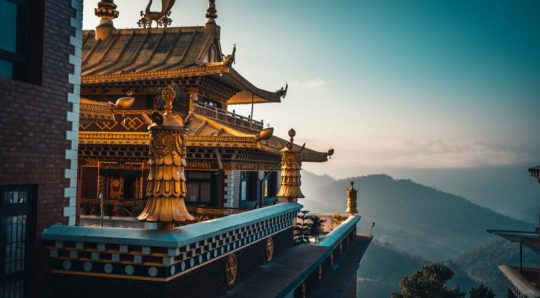
Bhutan, the land of the Thunder Dragon, is a destination that exudes tranquility and captures the hearts of travelers. Nestled amidst the mighty Himalayas, this enchanting kingdom is a perfect blend of untouched natural beauty, vibrant culture, and warm-hearted people. If you’re planning a trip to Bhutan and wondering about the top things to do, Yashvi Tours and Travels is here to guide you. In this blog, we will unveil the best experiences and activities that will make your Bhutan tour truly unforgettable. Book your customized holiday package to Bhutan now!
Explore the Mystical Monasteries:
Bhutan is renowned for its awe-inspiring monasteries and dzongs (fortresses). The iconic Tiger’s Nest Monastery, perched precariously on a cliff, is a must-visit.

It offers breathtaking views and a sense of spiritual serenity. Punakha Dzong, known as the Palace of Great Happiness, is another architectural marvel that should not be missed. These sacred sites provide a glimpse into Bhutan’s deep-rooted Buddhist culture and offer a peaceful retreat for introspection.
Trek through Pristine Trails:
Bhutan’s pristine landscapes offer numerous trekking opportunities for adventure enthusiasts. The most famous trek is the Druk Path Trek, which takes you through lush valleys, rhododendron forests, and pristine lakes.

For a more challenging adventure, the Snowman Trek offers an unparalleled experience, crossing high mountain passes and remote villages. Trekking in Bhutan allows you to connect with nature, witness breathtaking scenery, and create lasting memories.
Immerse Yourself in Bhutanese Festivals:
Bhutanese festivals, or tshechus, are vibrant and joyous celebrations that showcase the country’s rich cultural heritage. These colorful events feature masked dances, traditional music, and elaborate rituals. The Paro Tshechu and Thimphu Tshechu are the most popular festivals, attracting locals and tourists alike.

Witnessing these festivals provides a deeper understanding of Bhutan’s traditions, beliefs, and community spirit. You can book Bhutan tour packages from India that include festival visits to ensure you don’t miss out on this cultural extravaganza.
Experience Bhutan’s Culinary Delights:
No trip to Bhutan is complete without savoring its unique cuisine. Try Ema Datshi, the national dish made with chili peppers and cheese, or Momos, delicious dumplings filled with vegetables or meat.

Red rice, butter tea, and Suja (salted butter tea) are also local favorites. Bhutanese cuisine reflects the country’s simple yet flavorful culinary traditions and is sure to leave your taste buds tingling. Don’t forget to indulge in a traditional hot stone bath, where medicinal herbs are infused in the water for a truly rejuvenating experience.
Soak in the Hot Springs:
Bhutan is blessed with numerous natural hot springs known for their therapeutic properties. After a long day of exploring, relax and rejuvenate your body and mind in one of these hot springs. The Gasa Hot Spring, located amidst pristine surroundings, offers a serene and calming experience.

Soaking in these mineral-rich waters is believed to have healing effects and is a cherished activity for both locals and visitors. It’s the perfect way to unwind and revitalize during your Bhutan tour.
Discover Bhutan’s Wildlife:
Bhutan is a biodiversity hotspot with a rich variety of flora and fauna. Explore the dense forests of Royal Manas National Park or Jigme Dorji National Park to spot rare and endangered species like the Bengal tiger, clouded leopard, and black-necked crane. Birdwatchers will be delighted by the vibrant array of avian species, including the Himalayan monal, pheasants, and various eagles.

Embark on a wildlife safari and get up close to Bhutan’s incredible natural heritage. Yashvi Tours and Travels can arrange customized wildlife tours to enhance your wildlife experience.
Engage in Cultural Immersion:
Bhutan offers several opportunities to engage with the local culture. Visit rural villages and interact with the friendly Bhutanese people to gain insights into their way of life.

Participate in traditional Bhutanese arts and crafts workshops to learn about the intricate techniques used in thangka painting, wood carving, and textile weaving. You can even stay in a farmhouse and experience the warm hospitality and traditional Bhutanese lifestyle firsthand.
Conclusion:
Bhutan offers a myriad of experiences that cater to every traveler’s interests. Whether you seek adventure, spiritual enlightenment, cultural immersion, or simply a peaceful retreat, this enchanting kingdom has it all.
From exploring mystical monasteries to trekking through breathtaking landscapes, indulging in local cuisine, and immersing yourself in the vibrant festivals, Bhutan will leave an indelible mark on your soul. Yashvi Tours and Travels is ready to curate your dream Bhutan tour package from India, ensuring a seamless and unforgettable journey. Embark on this magical adventure and unlock the hidden treasures of Bhutan.
Article Source : https://www.yashvitours.com/things-to-do-in-bhutan/
0 notes
Text
Taste The Unique Bhutan’s Street Food- Norbu Bhutan
Bhutan is one of the most beautiful and environmentally stunning countries in the world, and it receives thousands of tourists each year. The country is home to more than 2500 glacial lakes, breathtaking mountains, dizzying rivers, and an abundance of plants and animals.
Bhutan is rich in terms of geography, but it is also rich in terms of religion and culture. They consider the nation's heritage and history. One of the such aspect of Bhutan's heritage and a general representation of their culture is the Bhutan street food.
Be sure to sample the exquisite fusion of regional ingredients that is Bhutanese cuisine while you are there. The regional cuisine is significant to the populace and attracts tourists as well.
Dumplings (Momo)
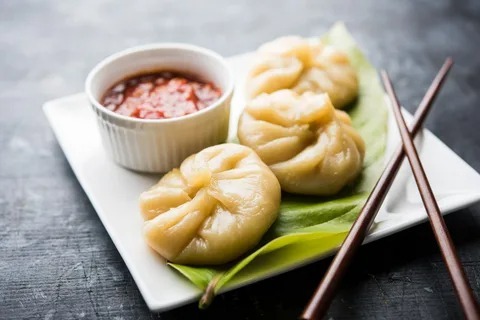
This common street food in Bhutan is derived from Tibetan cuisine. Momos are merely dumplings that are eaten throughout Bhutan.
Despite sharing many similarities with Chinese dumplings, they are distinctive in their own right. The dumpling is made by steaming it along with a side of tomato ezay dip, which has a tangy flavour.
There are several ways to prepare and serve momos, including steaming, frying, sautéing, and pan-frying.
Depending on the type of momo, the stuffing inside varies. They are a must-try dish while visiting Bhutan and contain minced pork or beef, cabbage, fresh cheese, garlic, and coriander leaves.
Soup Noodles (Thukpa)

Thukpa is a delicious and meditative food, and the ideal Thukpa in the right environment may sooth your spirit.
It is yet another delicacy with deep and varied Tibetan roots. The dish highlights the street food of Bhutan's wholesome native flavour.
The soup already has a tangy flavour from the garlic, chopped onions, noodles, and stock; the green chilies add heat and flavour. Both vegetarian and non-vegetarian versions of thukpa are offered.
The main variation is that the chopped vegetables in the non-vegetarian version are replaced with red meat or poached eggs. The Vegetarian Thukpa is a suitable vegan food because it doesn't contain any dairy products.
A Tea Made With Butter(Suja)
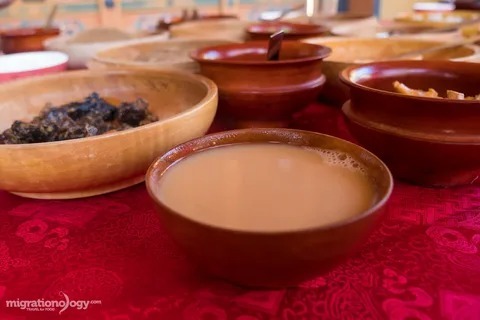
This hot beverage is one of the street foods you should try in Bhutan. It's a special butter tea recipe made with salted water, fermented yak or cow butter, and a couple of cups.
The mixture's saltiness depends on how much butter is poured into the tea. The best way to enhance its flavour is to serve it with "zaow," which is simply puffed rice.
On your trip to Bhutan, are you prepared to sample some of the country's most popular street food? On your trip to Bhutan, get in touch with Norbu Bhutan to learn more about the delicious street food available there.
0 notes
Photo
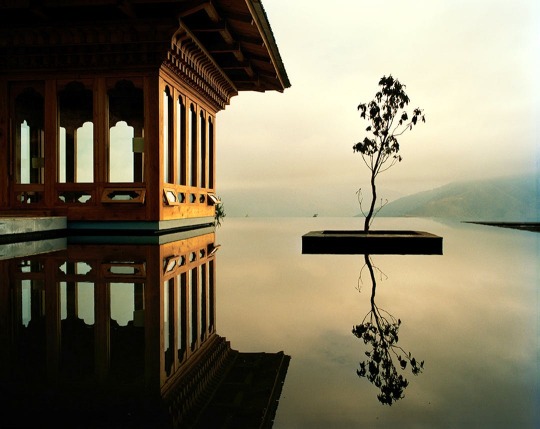
The tiny Himalayan kingdom located between China and India is a land of monks, meditation, and joy.
I had landed in the Paro Valley for a week’s journey through Bhutan, the reclusive mountain kingdom tucked between China and India, near Tibet. Renowned for its Himalayan vistas, which would be wasted on me, Bhutan is also a destination for luxury travelers interested in the pursuit of “wellness.” The government famously measures the country’s success not by its economy but by its population’s happiness. When considering foreign investment, the kingdom considers how it might impact the nation’s Gross National Happiness. The Bhutanese must know a thing or two about feeling good. I was keen to find out.
Wellness is exactly my default. Humor has carried me through much, but I sometimes worry that this has been at the expense of a deeper spiritual well-being. Something healthier than a joke. I hoped to emerge fresh from the Paro bathhouse open to new experience and perhaps even to a new understanding of happiness itself.
A traditional bath steeps you in the richness of its modesty. That is until, feeling around for a towel, I knocked down the wall between me and the workers. For a moment they stared at my naked honesty. Privacy was gone. Modesty was, too.
About an hour and a quarter from Paro is Thimphu, the kingdom’s capital, home to approximately 100,000 people and no traffic lights. Cows and stray dogs wander the streets as if looking for parking. Passing through, I climbed a winding mountain road to the first of three Six Senses resorts I would visit, each in a different region and elevation, each inviting its guests into a unique landscape where they can participate in a specific wellness experience. The resorts are the childhood dream of their owner, Dasho Sangay Wangchuk. A funny and loquacious entrepreneur, he dined with us on our first evening at a table crowded with plates of pomegranate salad, braised yak meat, and Bhutan’s national dish, ema datshi, or chili peppers with cheese. He had grown up in his father’s hotel, and as a child he had witnessed the impact Bhutan’s natural beauty and spiritual depth had on its occasional visitors. Later, as a young man attending university abroad, Dasho could appreciate even better Bhutan’s unique appeal. His is a country skirted by the tallest mountains in the world, protected for centuries from colonization or influence. His is a country that permits only a limited number of tourists and did not allow television until 1999. In some respects, it is a culture that is very new and very old, with little in between.
Perched on a mountain and surrounded by apple orchards, the Six Senses Thimphu resort is a monastery-inspired lodge referred to as the Palace in the Sky. An aerial motif touches everything. Clouds pattern carpets. The ceiling of its restaurant, Namkha, is hashed with beams chiseled in shapes that undulate like a cloud. A wall of windows brings the sky into each villa and simultaneously pushes guests out to the edge of the earth. In the main foyer, a painting of the medicine Buddha reminds visitors that they are here for health. There are no plastics. Even our toothbrushes will biodegrade. Housed in something so healthy, I would similarly tend to the betterment of my body.
Massage is my cup of tea. I was about to receive my first Bhutanese tenderizing. When you think about it, massage is also a form of correction. You’re about to be pushed back into place, as it were. I bristled as they brought in the table.
My masseuse practiced a style called marma, which began not with hands or oil, as I had assumed, but with voice. A meditation. I was invited to imagine the sky and smile at the sky. To breathe the air and smile at the air. Then flowers. Soil. Again and again I was encouraged to engage the world around me and to feel a gratitude that would relax my own physical being. As she chanted, my masseuse played a singing bowl and held it close to my ears until the note collapsed into smaller, cascading harmonics. The bowl was then placed on my stomach, sending its vibrations through my skin, moving its tone through my muscles and bones. A sound massage. In our daily lives, we forget that sound, being a vibration, is actually a form of touch. The ear is a finger. Through words and music, they managed to relax me into an hour and a half.
Everywhere you turn in Bhutan, it seems, something is there to remind you that luck, good and bad, is a force. You’d best take the proper precautions. Incense is everywhere, the smell scrubbing the country of bad spirits. Prayer wheels abound equally, always whirring in the distance.
In a private home I visited for lunch, a local monk was at work. He gently took my hands and dipped my fingers into several bowls to let me feel the butter he was painting on a ritual cake that, from what I could feel, was half my size. This was a spiritual service for my host family. The offering would bring prosperity and more good luck. Smaller cakes would also be left on the roof for the crows to take to the gods. It seems that, in Bhutan, wellness comes from giving your cake away, not having it and eating it, too.
Six Senses Punakha is quite literally a flying farmhouse. Overlooking a warm valley cleaved by two rivers called the mother and the father, the resort’s main building is ingeniously engineered to hover over an expanse of rice paddies. Angled steps surprised me as I walked. Climbing the land around me was an entirely different collection of angled steps. These were the terraces on which farmers grew wheat and more rice. In walking the steps of my new stay, my feet were feeling a small likeness of the landscape around us.
The Punakha area is perhaps most famously known for its ubiquitous depictions of male genitalia. Punakha is where Drukpa Kunley, the Divine Madman, first arrived from Tibet in the 15th century with his brand of sexy, drunken, bacchanalian Buddhism, and his legacy persists! A road sign might replace an arrow with a penis. Phalluses frame archways and adorn everything from doors to keychains.
My focus was elsewhere. Chorten Ningpo is a Buddhist monastery about a two-and-a-half-hour hike from the Punakha farmhouse. Many tourists visit Bhutan specifically for a hike like this. Given the thin air and potential altitude sickness, choosing to hike is a serious commitment.
Yountin, my guide, led me up a ladder into a room where three monks were in prayer with a bereaved woman. I sat quietly near the wall and listened to their rumbling incantations. They were the expressive, guttural tones I associate with throat singing. I’d heard other monks in other rooms before, including a group who rang bells and chanted, some holding skulls while others played flutes fashioned, I was told, from human thigh bones. To be present for so much ritual, from the prayer flags to the stupas to the cakes to these monks, made me realize how little of the sacred I had in my own life. All these experiences suggested the shape of a hole, but I had no idea what I would fit in there.
“Give me your hands,” Yountin whispered.
She quickly arranged my palms into a bowl and explained that the head monk was coming around. The man in the red robe had agreed to Yountin’s request that I also receive a blessing of holy water. I was instructed to drink most of it, which would cure whatever in me needed curing, then to press the remainder to my forehead for clarity of mind. Finally, a cure other than jokes.
The holy water arrived without a word, its trickle collecting in my cupped hands. Then, as I raised it to my lips, it dribbled through my fingers, gone. Goddamnit. My one shot at holy water and I fumble it. I didn’t feel I could ask for more, either. I’d be Bhutan’s Oliver Twist: “Please, sir, I want some more.” Maybe all my jokes were coming back to teach me a lesson. I pressed what moisture was left to my forehead and had the clarity of mind to know I’m an idiot.
Outside, we snacked on apples and listened to the sound of boys training to be monks. They were in a room on the second floor, its windows open, and, I was told, would occasionally peek their shaved heads out to get a look at us. I was heartened to hear them laugh as a few of them clubbed each other with their prayer books. Kids will be kids, even if they will grow up to be monks. Jokes before prayers. Maybe, in fact, there is a place for humor.
“I’m curious,” I said to Yountin, “do the monasteries have televisions?”
“Oh, for sure,” she said. “They love TV.”
“So what do monks like to watch? The Simpsons?”
“Soccer,” she said. “They love soccer. Big Manchester United fans. It’s the red uniforms. Monks wear red, too.”
After a week of considering my body and soul, and how to find wellness therein, it felt good to come back to Paro, where my journey had begun. Tucked in a forest at the end of a winding, rough mountain road, the Six Senses Paro resort is a series of stone buildings that complement their neighboring monastic ruins and sit atop a subterranean warren of massage and prayer rooms. One evening I sat outside and drank ara, a kind of sweet moonshine, and took a very temporary vow of silence as I listened to the stray dogs under the stars. They howled for something. We all do. Maybe soon they would try to sleep in their trees.
On my last day I stopped to visit a monk at an astrology school. He would tell me about my past incarnations, my present selves, and my future paths. I met him in a room that felt like it belonged to a community college professor. It was small and dark and pack-ratted with books and shelves. A yak hide covered the couch. I sat on it and waited as the monk took my birthday information from Yountin, who translated between us. When he was ready, the monk consulted several serious tomes and made some notations, calculating my past to find my fate. My thoughts turned to the past week. All this wellness, the stone baths and yoga and doctors and holy water, but what if the question of well-being is, in the end, a fixed proposition? Sure, less gluten and more mindfulness feel good, but what if they don’t, in the end, change the story of who you are?
The monk was ready. He had my answers. “In this life,” he told me, “you will have some problems with your senses. But you will travel. And although you will travel very far in this life . . . you are not looking for anything.”
It took me a moment to realize how true this is. As a pilot, I literally wander the globe and, like it or not, look for nothing. But in doing it, I am at my best. I am well. We think of being well as a thing to pursue, as a state of being to reach, like a destination. Like a country or a beautiful hotel. But it’s really more like water through your hands. A pleasure to have tried and fumbled. We can cry or we can laugh about it.
I wanted to say something about this to the monk. I wanted to take him outside and have a philosophical dialogue with him under a tree, or under a dog sleeping in a tree. I had questions about my happiness. I wanted to tell him something funny that happened along the way.
But his phone was vibrating on the desk. Its custom ringtone was a Buddhist chant. He was busy. He ushered us out, bowed a polite goodbye, and shut the door to answer his calling.
Daily inspiration. Discover more photos at http://justforbooks.tumblr.com
36 notes
·
View notes
Text
Sleep-over in a Bhutanese monastery
window.dataLayer = window.dataLayer || []; function gtag(){dataLayer.push(arguments);} gtag('js', new Date()); gtag('config', 'UA-139979696-1');
“Wow! You will sleep in a monastery with sixty monks practicing tantra?” My best friend’s voice reflected awe, worry, concern and even readiness for the same endeavour when I told her about my plans for the mission to Bhutan.
“Relax, cool down. Monks have to observe strict celibacy. They can’t even shake a woman’s hand,” I tried to dispel a common misconception about the Buddhist tantra that is often held by (not only) Czech people. “And after all, the majority of them are children – it is a monastic school.”

The Chorten Nyingpo monastery in the Kabjisa region was built more than 350 years ago. Before then, this place was deemed cursed, full of evil demons, and people were too frightened to come near. Drukpa Kuenley, the “divine madman” and distinguished lama, who lived in the 15th century had fortunately changed that. From the opposite hill, he threw a burned stick at the cursed hillock, by which he purified the place and expelled all demons. The stick took root and grew into shadowy, twisted tree that dominates the monastery main gate up to this day.
Unsurprisingly, even the way up to the monastery is deeply spiritual. After you leave the main tarmac road and drive along a narrow track in a steep slope, you will hurriedly say your prayers hoping that there will not be any vehicle in the opposite direction because you wouldn’t stand a chance in trying to pass by. If you are fortunate enough and make it up the hill into 2,7000 metres above sea level, on the left you can admire a breathtaking view of the white walls protecting the main temple. As if it was a fairy tale! If the villagers burn the grass before new planting, veiling the monastery into a puff of mystical smoke, the scene might bring tears to your eyes, as it did to mine.
Chorten Ningpo is a monastic school that prepares boys for their livelong mission. A few years ago, UNICEF built a source of drinking water, washrooms and toilets here, and now continues working with the teachers so that, in addition to mastering rituals and memorizing holy text, young monks obtain standard education and have also the possibility to play games, do sports, and are protected from bullying, violence, and abuse. It used to be a common practice for the Bhutanese families to send one of their sons to a monastery. Today, however, wealthier parents prefer to send their children to schools and universities abroad, and so monasteries rather cater for orphaned children or children of poorer background.
I am curious what has changed since my visit last year!
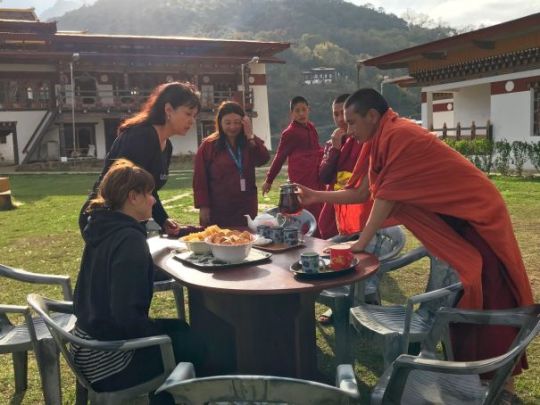
First and foremost, the monastery has a new head. Lama Nado (my Bhutanese colleague Phuntsho tells me that in the Dzongkha language that means dark) meets us for the first time and is quite reserved. He lifts the door curtain of the main room where teachers stay and beckons us to enter. First of all, we are invited to drink butter tea sudja that is inseparable from every visit in Bhutan. A surprisingly cold, wood-panelled room is decorated with pictures of the royal dynasty on one wall and all manifestations of Guru Rinpoche, who brought Buddhism to Bhutan, on the other wall. A blue carpet lies on the floor, sheer luxury! Swarms of bees on the carpet that look as if they were still alive. That hunch was correct as painfully confirmed by my colleague Phuntsho. I attempt to explain the objectives of our mission in a friendly and yet fair and humble tone – and it paid off in the end: I noticed a faint smile on lama Nado’s face. Perhaps he had just been stressed by the visitors from abroad and relieved his anxiety once it turned out that we are quite normal.
Young monks’ day starts even before the dawn – at 4:30 in the morning. Two teachers wake them up by banging the gong that is strategically placed in front of the boys’ bedrooms. Within a few minutes, first little figures wrapped in red robes leave the rooms and descend the stairs to the bathrooms. The teachers keep banging, they are now faster and more insistent, so in a quarter of an hour no sleepyhead stays in the bed. Breakfast? Not even close. At five o’clock, young monks sit on the floor of the classroom muttering their prayers. That takes an hour, then the lessons begin. They are not much different from prayers: boys recite holy texts; however, they are less coordinated and shout at one another.
By the law, the monasteries should only accept children that are at least seven years old. Yet the smallest children here look younger – five or six years old. The cause of this may lie in the fact that every fifth child in Bhutan is stunted due to mother’s anaemia and chronic malnutrition in pregnancy or undernourishment in their first years of life. That is damage that cannot be compensated later.
First meal of the day is served at eight. Small monks are awake for more than four hours, and unlike me, they look quite fresh and lively. Breakfast picnic! Looking at two rows of monks sitting on the grass in front of the main sanctuary, I just cannot avoid thinking about this association. Older monks serve rice and chilli from big bowls. All of them must be terribly hungry, yet each of them first makes a small rice roll as an offering and puts it aside. This is eagerly awaited by the dogs that live in the monastery. Bhutanese people believe that a dog is the closest reincarnation to a man. As a result, any good you do to a dog you are likely to be rewarded for even within this life. If by any chance the supreme judge of karma decided that I was too naughty in this life and couldn’t possibly return as a human, I wouldn’t mind becoming a dog in the Chorten Ningpo monastery :-).
After breakfast, it is again time for study. The boys stay in the classroom for the entire morning. At one o’clock, young monks get lunch: the most modest meal of the day consisting of tea and few biscuits. This is a great time for having a siesta – waking up very early made me so tired that part of my body would relish a nice afternoon nap. “Will they go to bed now?” I ask full of hope. Lama Nado smiles faintly: “No, no, they must study more. It requires discipline and self-restraint to become a monk!”
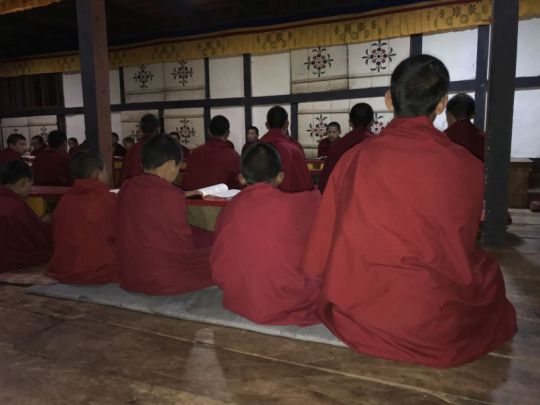
The boys come back to the room, and though I am dead tired, I pretend to be very involved and excited. The afternoon is time for rituals. The boys take turns in groups scattered around the monastery: they practice their musical instruments (thought there is not enough of them for every boy, so some young monks substitute a trumpet with their robes), or they made ritual objects from dough, older ones devote their time to “religious polemic”. This means that half of them sit on the lawn and the second standing group “demolish” them with arguments. The topic is prayer flag colours: white stands for purity/wind, blue represents water, green is for nature, red is for fire, and yellow is the colour of the earth. I’m trying to find out more about this when a group of young monks pulling a body of a dead dog disturbs this philosophical debate. Each of them holds one of the dog´s leg and even though it is unlikely for a dog to be so heavy, tiny boys’ backs bend under its weight. My surprised face made lama Nado explode with laugher: “No, the dog is not dead. They only have it castrated down in the village.” And he points to a pile of wood behind the sanctuary from where I hear many whimpering weak noises. Perhaps, I will need to rethink my reincarnation plans.
The sun approaches the summits and ancient trees surrounding the monastery cast dense shadows. Lama prepared afternoon tea for us. Now it is black, without milk, yummy! The monks brought the kitchen table outside, and I realize how special this moment is. “Are there any tourists here?” I ask. “Recently, we have had more of them. They built a new hotel down in the valley and the tourists sometimes visit us too. One American donor even pays an English teacher who arrives once a week.” It is just a matter of time when someone finds out that the tourist who pay 1.2000 dollars a night won’t hesitate to pay at least as much for a picnic with a lama. The unique magic of this place will be lost though. I secretly wish that tourist found a different source of amusement. And I am even more proud of UNICEF’s programs that always respect the local tradition and culture, wherever we work.
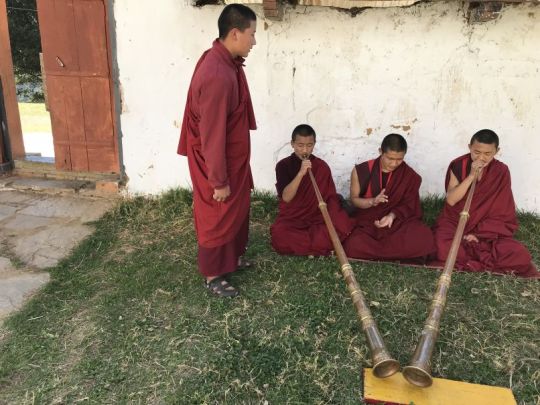
“For monks, water and hygiene is very important. Since the bathrooms were built, the boys have been sick only rarely, even in winter. Before that they had often developed skin diseases or infections, but it has radically improved lately. Water is also needed for rituals in the temple. Anyway, we need to extend the source of water because it is dying down.” The monastery has also embarked upon higher monks’ education and stirred up considerable interest that necessitates increasing the capacity from 50 to 100 beds and building a proper retreat facility. In order to become a lama, you need to spend 3 years, 3 months, 3 weeks, 3 days, and 3 hours meditating in a secluded place without any contact with other people.
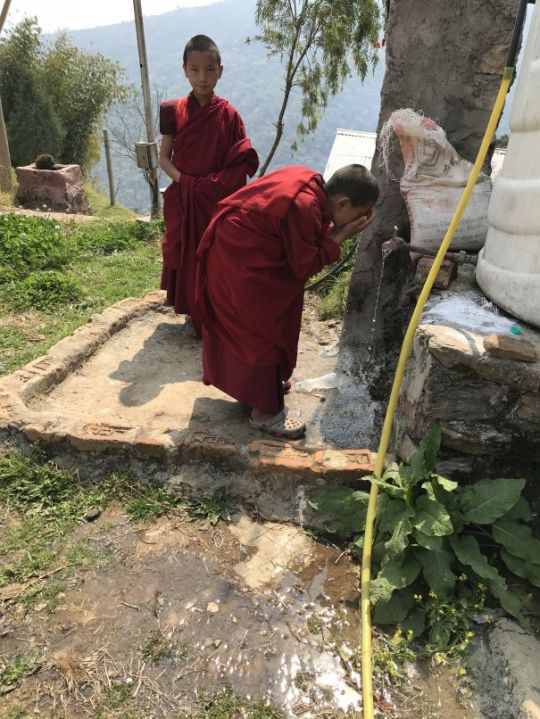
At five o’clock we have dinner. Young monks gather in the dining room. Every boy carries his own metal plate. He will need to wash it on his own after dinner. It is practical: older monks who are in charge of the kitchen do not have to bother with all plates but clean only big pots in which they cook – nothing other than – rice and chilli sauce. Most monasteries are vegetarian as ordered by the chief abbot. Nothing surprising in a country where Buddhism is recognized as a state religion and slaughterhouses are banned. On the other hand, a lack of proteins contributes to anaemia in 44% of Bhutanese children. 15 years ago, it was a terrifying 80 percent. Among other things, the percentage decreased thanks to UNICEF’s programme at primary schools that started “iron Thursday” and advocated for the fortification of salt with iron.
Today’s dinner in Chorten Ningpo would not please nutrition specialists – again it consists of rice and chilli. That is why asking children here about their favourite food is ridiculous. They eat whatever they get. That is monk’s life: they do not eat when they are hungry, they do not rest when tired, they do not wear what they would like to wear – austerity and adherence to a strict routine is a way of fulfilling their duty.
The dinner is silent. Extraordinary, considering how many children are there. Noble silence is probably part of a ritual, and I am grateful for it right now because I am at the end of my tether, too exhausted to talk. Some boys gather in bigger groups while others sit alone or with one mate – I am thinking about what kinds of relationships can be forged in the artificial environment where the youngest children are unsupported by parents and must be largely self-reliant.
It must be difficult for the newcomers to get used to following such a strict programme. While other young monks go outside to wash their plates, seven-year-old Younten, who has been living in the monastery only for three months, stands behind the dining room with eyes full of tears. He is embarrassed by strangers, so he swiftly dries the tears, tidies his robe, and joins his mates. His parents separated and he had to live with his grandma. She was, however, too frail to take care of a small child. So the monastery is the only Younten’s option. He has to get used to it.

Separation from the family is the only disadvantage that 17-year-old Dawa Tashi, the best student of the school, mentions as well. He has been living here for five years and has coped with it so well that he sometimes looks more self-confident than the lama himself. “I like it here. The major benefit of being a monk is profound wisdom and knowledge. I would like to become a teacher and be a role-model for the others,” he says determinedly. I trust him.
Time after dinner brings some leisure pursuit. The monks set up a net on a holy tree, wrap their robes around the knees so that the clothes won’t bother them, and one of the monks brings a volleyball. Even though it is getting dark and the ball is hard to see, the boys keep playing, passing, setting and hitting the ball – relishing every single moment of being children again.
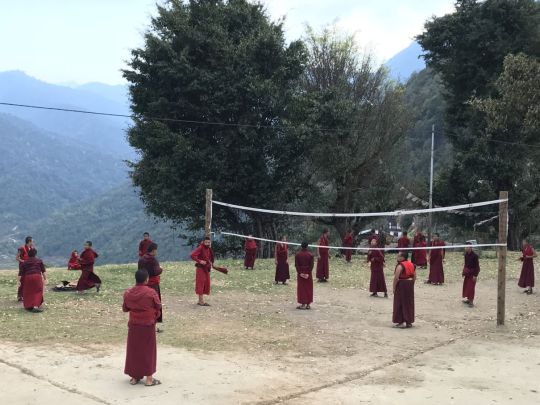
But Younten does not play. Perhaps he is too small for volleyball or not in the team yet. He sits by the pile of wood and plays with eight little puppies. Lama Nado expresses sympathy for that. He sits next to Younten and speaks with him while the puppies are biting their toes. Some people might say that this is too cute to be true, I am thinking as I look at the photos that I had taken. “Pavla, Pavla, mother is coming back!” my colleague Phuntsho cries with urgency. She worries that the puppies’ mother may attack me. I’d rather take a step back.
The monastery and its surroundings were plunged into complete darkness, and I am looking forward to creeping into my tiny room on the first floor. My mattress on the floor and a thick blanket look as if it was the best place in the whole universe after the exhausting day.

I should conclude with something wise. But the day has not yet ended for young monks! They hurry to the temple for an evening prayer. I can barely catch up with them. Recitation, songs, holy scrolls reading peppered with clinking and drumming – over and over again. Huh. The smallest kids also have enough. Some of them have fallen asleep in the lotus position with their heads falling forward and back until their mates poke them into their ribs to wake them up. The supervising teacher generously overlooks that. Every time the singing stops, I wish it were the end, but my hopes are dashed. The evening prayer last until eight p.m. – one and a half an hours. “It usually takes only an hour, but one villager passed away yesterday, and the relatives asked the monks for a prayer for his soul, so it’s longer today,” my colleague whispers to me.
Lama Nado finally gets up and leaves followed by the teachers. Hallelujah, done! But what is going on again? Young monks have to stay in the classroom! “They will have one more hour of study, their day ends at nine,” Phuntsho answers my unspoken question. And really, boys pick up their books and recite the texts even a bit louder than during the prayer. That made my jaw drop!
After nine they finally leave the classroom. The yellow light from the dining room glances softly. Lama Nado and I stand in the darkness outside and thought the window, we look at about ten boys sitting on the benches and sipping their tea from tin mugs. The dining room looks chilly and inhospitable. I wrap myself subconsciously into my jumper soaked with cool Himalayan air and ponder what warmth could a thin polyester fabric used for monks’ robes retain. “The evening tea is not compulsory, only some boys would come,” says Nadu. Five, ten minutes for tea, then they wash their faces and brush their teeth and at half past nine the boys are in their beds. I thought that I would see a sky full of stars in the Himalayas. The air is clean and fresh, but the night is cloudy, so the only light steams from the hotel down in the valley.
I do not want any tea now. Because I would need to turn on light, tiptoe on creaky floorboards, go down the steep wooden stairs and then cross the whole 100-meter wide courtyard to enter the bathrooms at night. For now, I will not stick to my water intake.
Last glance at the sanctuary and the flags that take all prayers to heaven. At night, the monastery looks completely different than in the daylight. I feel great ADMIRATION and RESPECT for the small monks that did not choose this way of life.
I know that monasteries have a prominent role in the Bhutanese society which we, the foreigners, admire so much. And that monk’s life is devoted to discipline, modesty and self-denial which may ultimately lead into the enlightenment. Yet I can’t help thinking about their right to have a standard childhood. They have a right to be with their parents, right to play, right to rest, right to acquire standard education.
One night in the monastery has changed a lot for me. Now when I wake up in Prague in the morning, I have to think about how much these boys had already done. When I feel tired after work and glance at my watches, I count how many hours more the monks will have to study. I decided that I will never complain again when I am in a hurry, exhausted or drained. And one more thing: I am proud that we take a small part in supporting these children to have clean water and hygiene facilities. Together with the local authorities, we work on improving the conditions these children live in – helping to protect the special and irreversible period that is called CHILDHOOD.
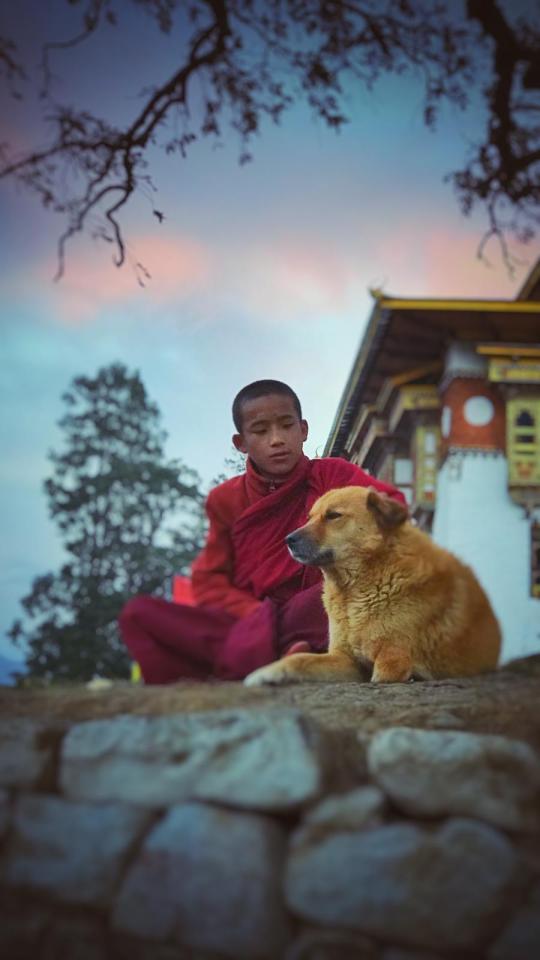
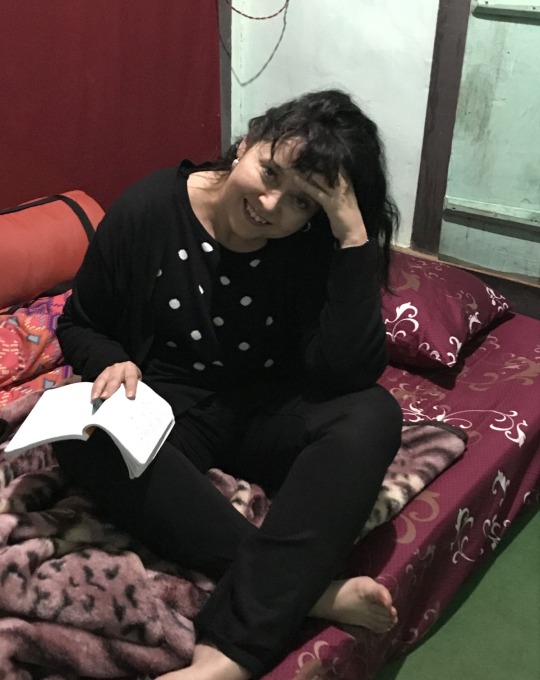

Photo Pavla Gomba and Vít Bělohradský, translation Petra Běličová.
1 note
·
View note
Text
Unique spa treatments to try around the world
New Post has been published on https://www.travelonlinetips.com/unique-spa-treatments-to-try-around-the-world/
Unique spa treatments to try around the world
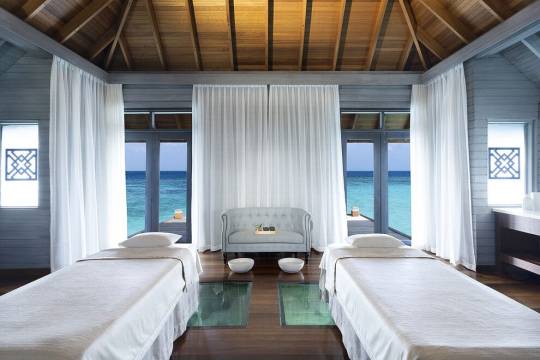

“Spa-cations”: the new normal — Photo courtesy of Small Luxury Hotels of the World
As the world continues to recover from more than a year of lockdowns, relaxing and rejuvenating escapes are going to be at the top of the wish list for most travelers. In addition to heading out to pampering stays in exotic places, why not make your next trip all about a self-care and healing wellness journey with a unique back-to-nature experience?
Here are some worldwide locations offering element-based (earth, water, fire, and wood) spa-cations that will refresh, revitalize and get you back in the mood for some international travel – whenever you feel comfortable with getting back out there.
Huvafen Fushi – Maldives

Underwater wellness at the Huvafen Fushi, Maldives — Photo courtesy of Small Luxury Hotels of the World
Heading the list in unique spa locales is the Huvafen Fushi in the Maldives. The Huvafen is home to the world’s first and only underwater spa, where reef-facing treatment rooms are set 30 feet under the sea. Therapists here have all trained with acclaimed massage expert Beata Aleksandrowicz, creator of the Pure Massage Spa Training Method.
Over-the-water bungalows and pavilions with plunge pools guarantee you’ll drift off into another world, and the secluded hideaway on North Male Atoll is as romantic as it gets.
Elite Springs Villas – Anxi, China
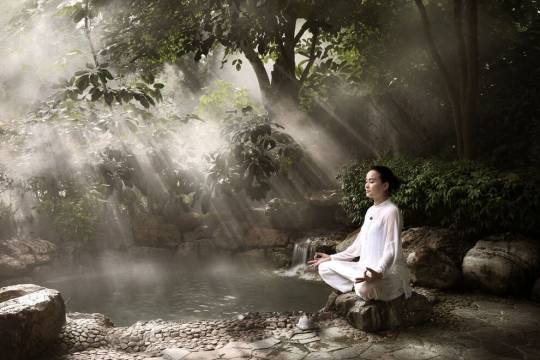
Find your inner Zen at Elite Springs Villas — Photo courtesy of Small Luxury Hotels of the World
Hot springs have long been savored for their healing properties, and a good hot soak will make a believer of even the most hardened traditional wellness skeptic. In Anxi, China, the Elite Springs Villas feature private luxury villas that each have their own hot spring pool.
The thermal mineral water here taken from beneath the mountains is noted for helping with rheumatism and arthritis, as well as for moisturizing the skin and delaying aging. The beautiful tea terraces of southern China are a backdrop and serve to enhance this Zen-like retreat.
137 Pillars Suites – Bangkok, Thailand
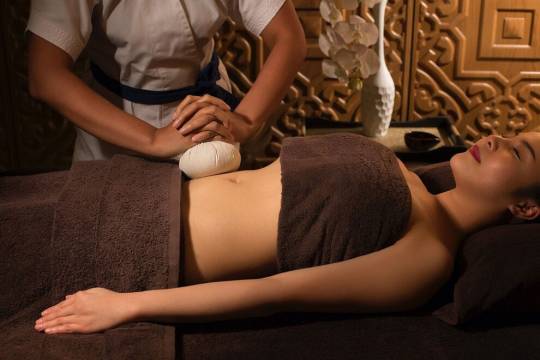
Hot stone magic, 137 Pillars — Photo courtesy of Small Luxury Hotels of the World
For a novel treatment using the element of fire, 137 Pillars Suites in Bangkok, Thailand offers a hot stone massage using heated volcanic stones placed on trigger points to penetrate the muscles and relax tension. At the swank property’s Nitra Serenity Center, you can also opt for traditional Thai massage sessions, Reiki treatments, herbal compresses and even Ayurvedic Indian head massage.
Additionally, you can float away after your session in one of the hotel’s two infinity edge pools, with Suite guests having access to a private one up on the roof.
Tanjong Jara Resort – Malaysia

Heated sand treatments, Tanjong Jaya — Photo courtesy of Small Luxury Hotels of the World
Another interesting warm treatment is the “tuam pasir” heated sand therapy offered by the Tanjong Jara Resort in Malaysia. Hot sand is combined with fenugreek and black seeds, heated in a frying pan and then put into a cotton pouch, which is then used for pressure massage. This treatment is noted for its therapeutic effect on joint pains and inflammation.
An added bonus here is the stunning resort, built to resemble a 17th-century Malay palace and set against a pristine beach, tropical jungle and the South China Sea.
Sankara Hotel – Yakushima, Japan
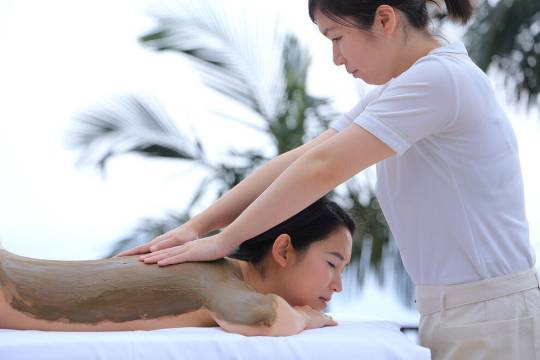
Relaxing on Yakushima Island — Photo courtesy of Small Luxury Hotels of the World
For wood-based treatments, try the Sankara Hotel in Japan. The resort is located on Yakushima Island, famed for its 7,000-year-old Jomon sugi cedar tree, said to hold magical healing powers. The old-growth cryptomeria cedar trees here contain more cedrol (a musky terpene found in the essential oil of conifers) than normal cedars, and the oils are used for healthy sleeping and to reduce stress and anxiety.
Some spa treatments here at the Sankara Sana Spa even include trekking packages to go with treatments that include salt baths and other delights. The villas here are constructed with dark cedar wood, and the forests on Yakushima are UNESCO-listed for their natural beauty.
Baros Maldives
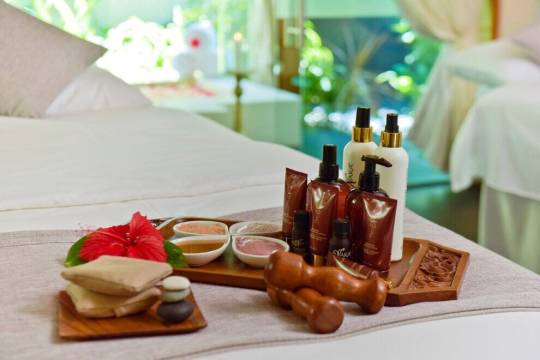
Wood-based treatments, Baros Maldives — Photo courtesy of Small Luxury Hotels of the World
Also worth a visit for “wood” treatments is Baros Maldives. Set on a small private island, the dazzling resort’s Serenity Spa boasts a TheraNaka East African wood massage, where small blocks of citrus-infused shea butter are massaged/melted into the patient, while rhythmic patterns from wooden musical instruments accompany the acupressure, resulting in one soothing, restorative treatment for a weary body.
Bhutan Spirit Sanctuary – Neyphu Valley, Bhutan
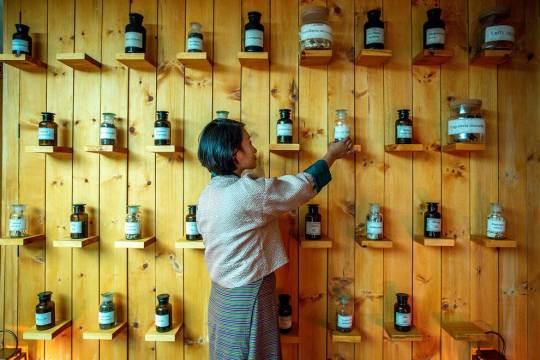
High altitude herbs at the Bhutan Spirit Sanctuary — Photo courtesy of Small Luxury Hotels of the World
For an earth-based treatment, why not head to the Himalayas and the high-altitude Bhutan Spirit Sanctuary? This hideaway in Bhutan’s Neyphu Valley is built to resemble a traditional Bhutanese dzong fortress. While here, you can have a private consult with a traditional medicine doctor (included with your room), and then have a spa treatment utilizing some of the Sanctuary’s collection of over 100 traditional high altitude herbs. The staff here will even give you an herbal garden walk to describe all of the healing properties of the plants you are engaging with.
Wherever you choose to go and whatever type of spa treatment you select, just remember that the journey itself is just as important as the destination, and as the wise Chinese philosopher Lao Tzu commented, “The journey of a thousand miles begins with a single step.”
And, of course, make sure that your landing spot and recovery is just as enjoyable, or maybe even that much better.
Source link
0 notes